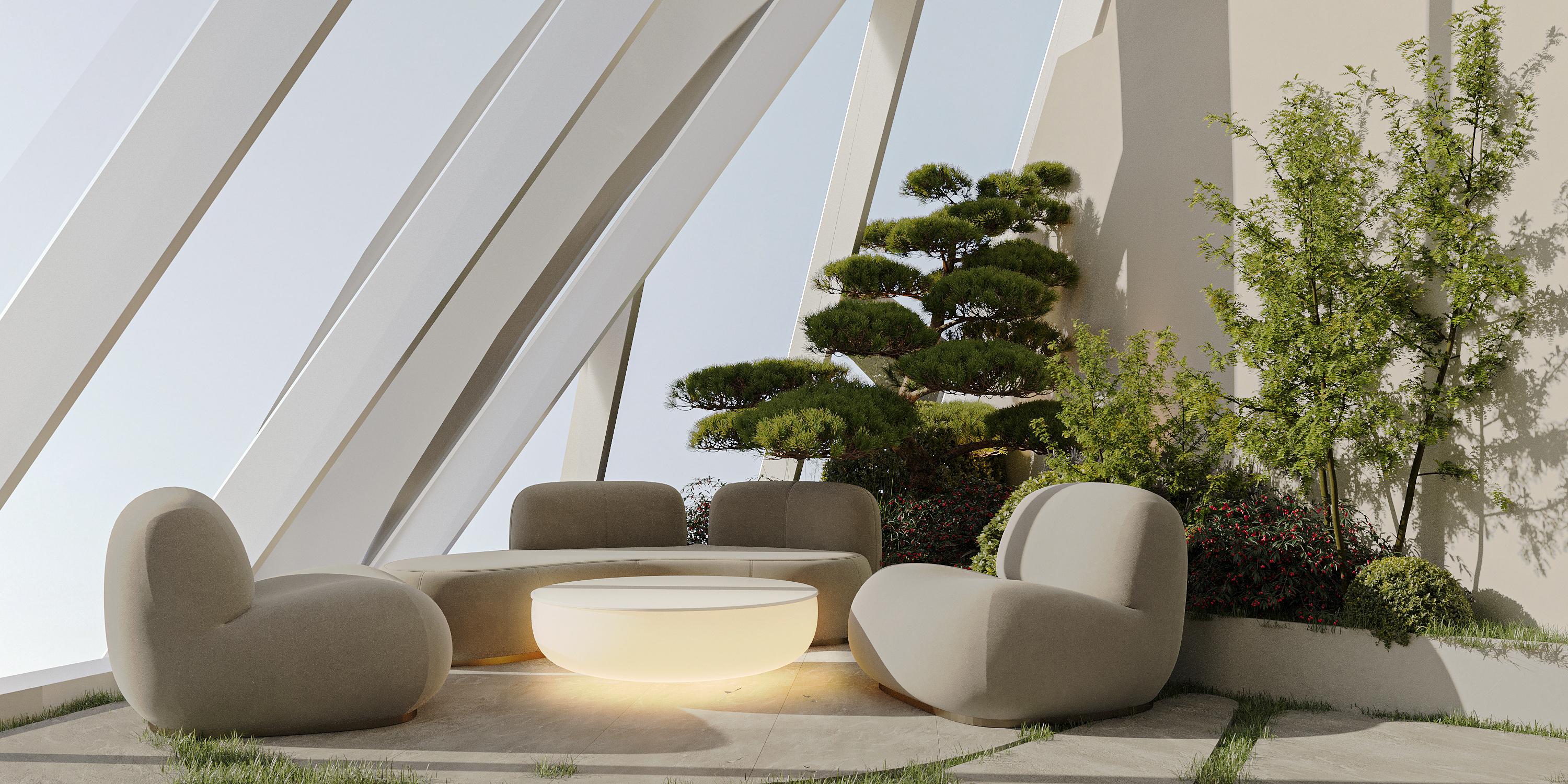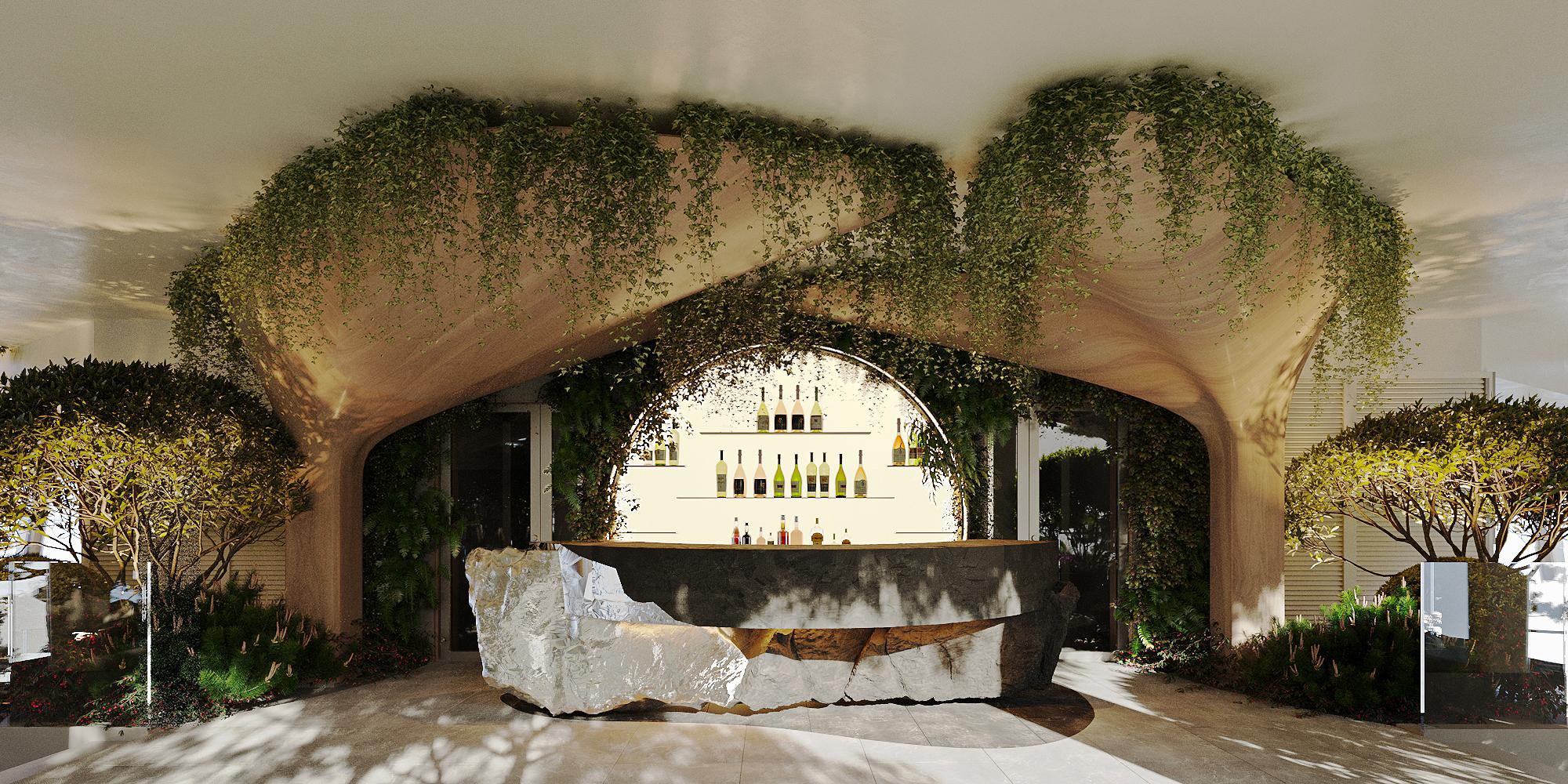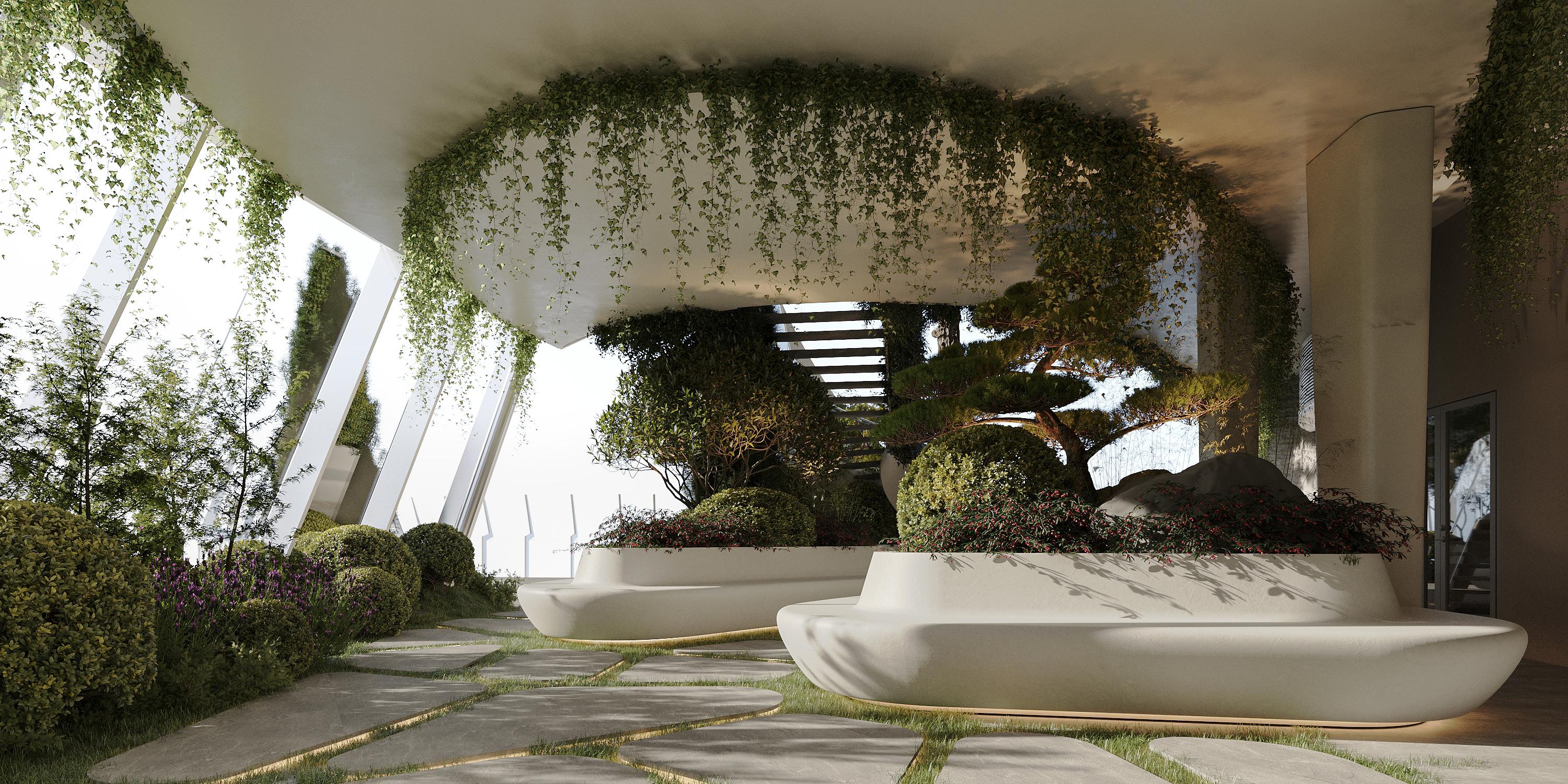Today, people need environments that promote inner balance and offer a sense of calm, grounding, and control over time and the body. In response, the design of hotels, apartment complexes, and resorts is evolving, with design playing a leading role in this transformation. Wellness design is one of the key drivers of commercial success. This is not only because guests are becoming more discerning, but also because spaces that shape emotional experiences foster long-term loyalty, organic promotion, and a strong brand identity.

Recreational area. Design by ZIKZAK Architects
At the studio, the team doesn't approach wellness as "a spa in the basement," but rather as a holistic design philosophy that permeates every layer — from the tactility of the flooring to the rhythm of human movement through a space.
Wellness design in hospitality differs from simply creating a beautiful interior. The key difference lies in the goal. While a typical commercial interior focuses on visual impact and function, wellness design introduces an additional layer of attention to the emotional state. This state defines the depth of the experience.
When designing a hotel or resort with a wellness focus, the studio begins by asking questions about the psychophysical effect the space will have on individuals. Will it encourage slowing down, calming, and recovery? How can architecture, light, sound, and materials support this without direct intervention? This is a form of design that does not demand attention. Its purpose is to create an atmosphere, not just an image. These spaces become valuable precisely because they invite people to stay longer.

Recreational area. Design by ZIKZAK Architects
Here's how this approach works in practice: 5 key principles applied by the studio:
1. Space as a scenario, not just a layout
Rather than simply arranging zones, the studio designs scenarios of presence within the space. They consider what a person will do, how they will move through it, how they will intuit direction, where they will pause, slow down, or need to focus. It is an architecture of emotions. In one project, the layout of a lounge area was shaped by the movement of a patch of sunlight across surfaces throughout the day. Its organic form and visual presence became a natural focal point.
2. Multi-layered meaning: Design that reveals itself anew with every visit
A wellness space need not be literally "themed." Instead, the studio creates layers of meaning that unfold gradually. Lighting, in terms of its rhythms, intensity, color temperature, and shadows, as well as tactile materials, natural scents, and acoustic zoning, all contribute to a sensory environment. These elements are often perceived subconsciously yet leave a lasting impression, resulting in a space that simply "feels good."
3. Transformation over fixed functions
The studio designs hotel spaces to be fluid and adaptable. For example, a meditation area in the morning might transform into an intimate performance space by evening. A yoga zone can become a coffee corner or a place for quiet conversation. This dynamism is embedded in the essence of the interior design, which preserves visual and spatial coherence.

Recreational area. Design by ZIKZAK Architects
4. The local code
In wellness design, establishing a strong sense of place is essential. Guests should immediately feel that this space could not exist anywhere else. Rather than replicating ethnic styles, the focus is on interpreting the unique context through elements such as nature, topography, materiality, color, and the local culture of silence and stillness. This concept takes on a different meaning in the Carpathians than in Odesa. The studio works with context, not as a checklist but as a source of deeper design logic. For instance, the rhythm of mountain trees might inspire the design of a wall or lighting installation. A courtyard pathway might be shaped by the landscape itself. In this way, exterior spaces become extensions of their environment, not merely decorative backdrops.
5. A space that doesn’t demand to be “used”
An interior should not feel as if it requires instructions. It should respond intuitively to human presence. Even a guest standing quietly in a lobby should experience a complete emotional moment, not just a waiting period. The studio designs spaces so that every interaction, even seemingly passive ones, is meaningful in itself.

Recreational area. Design by ZIKZAK Architects
This approach scales seamlessly across both public and private hotel spaces, adapting to shifting guest needs and flexible time frames. In every project, there is a choice: to design square meters or to design experiences. In hospitality development, the latter consistently proves to be more valuable.
Guests may quickly forget how many zones a space had or which furniture model was used. However, they will remember how the space made them feel—whether it encouraged them to linger, became associated with a pleasant emotional state, or simply served as a place to sleep. This emotional connection defines a hotel’s brand strength, the likelihood of recommendation, and the depth of return. It is precisely this—the quality of experience—that the studio designs using the language of space.
Read also:

